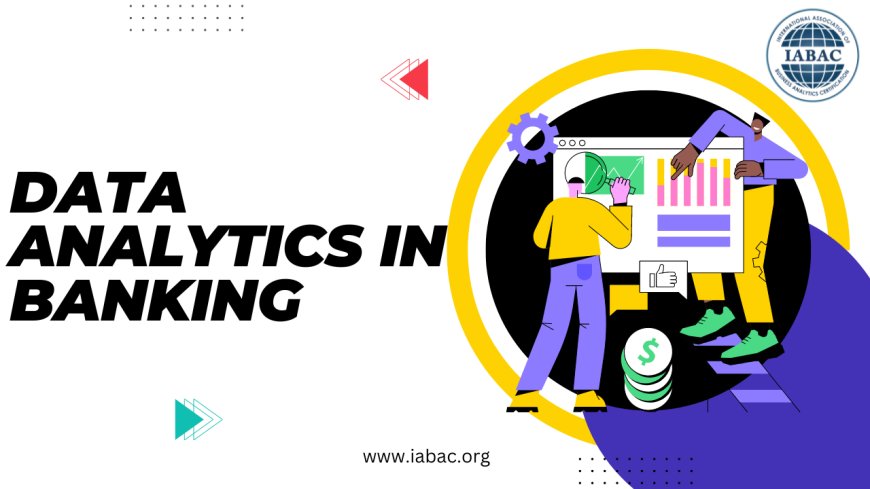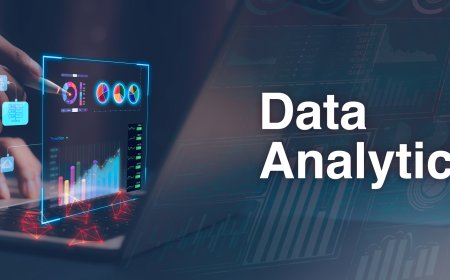Exploring the Impact of Data Analytics in Banking
Discover the transformative influence of data analytics on banking operations. Explore insights into efficiency, risk management, and customer experience.

Data analytics is now important for banking, completely changing how operations are carried out. Through the analysis of large-scale data sets, it reveals critical patterns and trends that are crucial for making strategic decisions. This approach helps with risk assessment and operational optimization in addition to understanding consumer behavior. Banks obtain priceless insights through careful analysis, enabling individualized services and effective risk management. Banks may proactively design plans and identify future trends by utilizing predictive algorithms and historical data, which fosters innovation and competition.
Through automated tasks, process simplification, and efficient resource allocation, data analytics improves operational efficiency. Additionally, it is important to maintain regulatory compliance and thwart financial crimes. Banks can get a competitive advantage by using data analytics, which promotes innovation, improves goods, and strengthens their position as industry leaders. Banks must adopt data-driven decision-making if they are to prosper in the highly competitive and digitally transformed market currently.
Challenges in Banking Data Analytics
-
Data Quality and Integration:
-
Managing the quality and integration of data from many sources is one of the main issues in banking data analytics.
-
Maintaining accuracy and consistency amid large amounts of data kept in different forms and systems is a challenge faced by banks.
-
To defeat this obstacle, strong frameworks for managing data and advanced integration tools are needed to standardize data throughout the company.
-
Regulatory Compliance:
-
For banks using data analytics, adhering to strict rules is a major barrier.
-
Banks have to manage intricate regulatory environments while making sure that data analytics procedures follow moral and legal guidelines.
-
To overcome this obstacle, strong compliance procedures must be put in place, data encryption and anonymization methods must be used, and regulatory awareness must be promoted.
-
Data Security and Privacy:
-
Protecting confidential client data is crucial for banking data analytics.
-
To preserve confidence and confidentiality, banks must protect data from cyber threats, unauthorized access, and attacks.
-
Strict compliance with data privacy laws like the CCPA and GDPR, together with strong security protocols like encryption, access controls, and frequent security audits, are needed to mitigate this danger.
-
Talent and Skills Gap:
-
For banks, finding a competent staff with the requisite expertise in data analytics is a major difficulty.
-
There is frequently a talent scarcity because there is a greater demand than there is supply for data scientists, analysts, and engineers.
-
Banks can work with educational institutions, fund training initiatives, and use outsourcing or partnerships to obtain outside knowledge to tackle this problem.
-
Scalability and Infrastructure:
-
Accessibility and infrastructure become crucial problems in banking data analytics as data volumes continue to expand significantly.
-
Older technologies might find it difficult to manage a rush of data, which would limit their capacity and cause performance issues.
-
Investing in cloud-based services, scalable infrastructure, and advanced analytics tools that can handle large amounts of data effectively is necessary to overcome this impediment.
-
Cultural Transformation:
-
Banks going through digital transformation face a fundamental barrier in adopting a data-driven culture.
-
The use of data analytics techniques may be limited by traditional banking cultures' sensitivity to change.
-
Strong leadership, successful change management techniques, and cultivating a culture that values data-driven decision-making are necessary to overcome this obstacle.
How does banking data analytics contribute to improving customer experience and satisfaction?
-
Personalized Services: Banks can understand the unique demands, preferences, and behaviors of their customers by examining their data. This makes it possible for them to provide every customer with customized goods and services, improving the relevance and significance of their banking experience.
-
Efficient Customer Support: Banks can identify client wants and issues before they materialize with the use of data analytics. Banks may improve customer satisfaction by promptly addressing consumer concerns, resolving issues, and providing timely assistance by examining past contacts and transaction data.
-
Seamless User Experience: Banks may improve customer experience by optimizing their digital channels and platforms with data analytics. Banks may discover pain areas, shorten procedures, and improve usability by evaluating client interactions with online and mobile banking interfaces. This makes it simpler and faster for customers to handle their funds.
-
Tailored Recommendations: Banks can provide consumers with timely and pertinent advice using predictive analytics. Personalized suggestions based on data analysis assist consumers in making better financial decisions and feel more supported by their bank, whether it's by recommending appropriate financial products, warning about possible loans, or reminding them of impending bill payments.
-
Fraud Prevention: Banks may significantly affect consumer satisfaction and trust by detecting and stopping fraudulent activity with the aid of data analytics. Banks may safeguard their clients from fraudulent transactions and financial losses by keeping an eye on transaction trends and spotting unusual activity. This helps to build trust and confidence in the banking relationship.
-
Feedback Utilization: Banks can learn about consumer preferences and views by analyzing sentiment data and customer comments. Banks can exhibit responsiveness and a dedication to customer satisfaction by continually improving their offerings, including services, products, and overall customer experience, by actively listening to and acting upon feedback from customers.
-
Timely Communication: Banks can connect with their consumers in a relevant and timely way because of data analytics. Banks may keep clients informed and involved throughout their banking journey by using transaction data and customer behavior analysis to offer timely, personalized messages, alerts, and notifications.
Evolving with Analytics in Banking
Understanding Customer Needs:
-
Banks are employing analytics to delve deeply into client information, including past transactions and usage trends. It helps in gaining an understanding of what clients require and desire from their banking expertise.
Mitigating Risks:
-
Banks are more capable to recognize and manage risks thanks to analytics. Banks can safeguard businesses and their clients by spotting any fraud, money laundering, or credit issues early on through the analysis of patterns and deviations in financial data.
Personalizing Services:
-
Banks can provide clients with customized goods and services thanks to analytics. Banks can personalize offers and suggestions according to each client's preferences by evaluating customer data and improving the relevance and appeal of the banking experience.
Streamlining Operations:
-
Banks can simplify their procedures and processes by using analytics. Banks may function more smoothly and cut costs by automating repetitive operations and distributing resources effectively, which will ultimately improve client services.
Ensuring Compliance:
-
Analytics helps banks in conforming to regulatory requirements. Banks can guarantee compliance with anti-money laundering (AML) and know-your-customer (KYC) regulations and prevent fines and legal problems by keeping monitors on transactions and customer information.
Data analytics has a significant and wide-ranging impact on the banking industry. By gaining important insights from massive information, directing strategic choices, and improving customer experiences, it transforms operations. Banks may personalize services, expedite processes, reduce risks, guarantee regulatory compliance, and promote innovation by using analytics. To fully reap the benefits of banking data analytics, however, issues like data quality, regulatory compliance, security, scalability, personnel shortage, and cultural transformation must be resolved. Despite these obstacles, there is no denying that data analytics can revolutionize the banking sector and provide a route to increased productivity, competitiveness, and client happiness in the ever-changing banking environment.










































